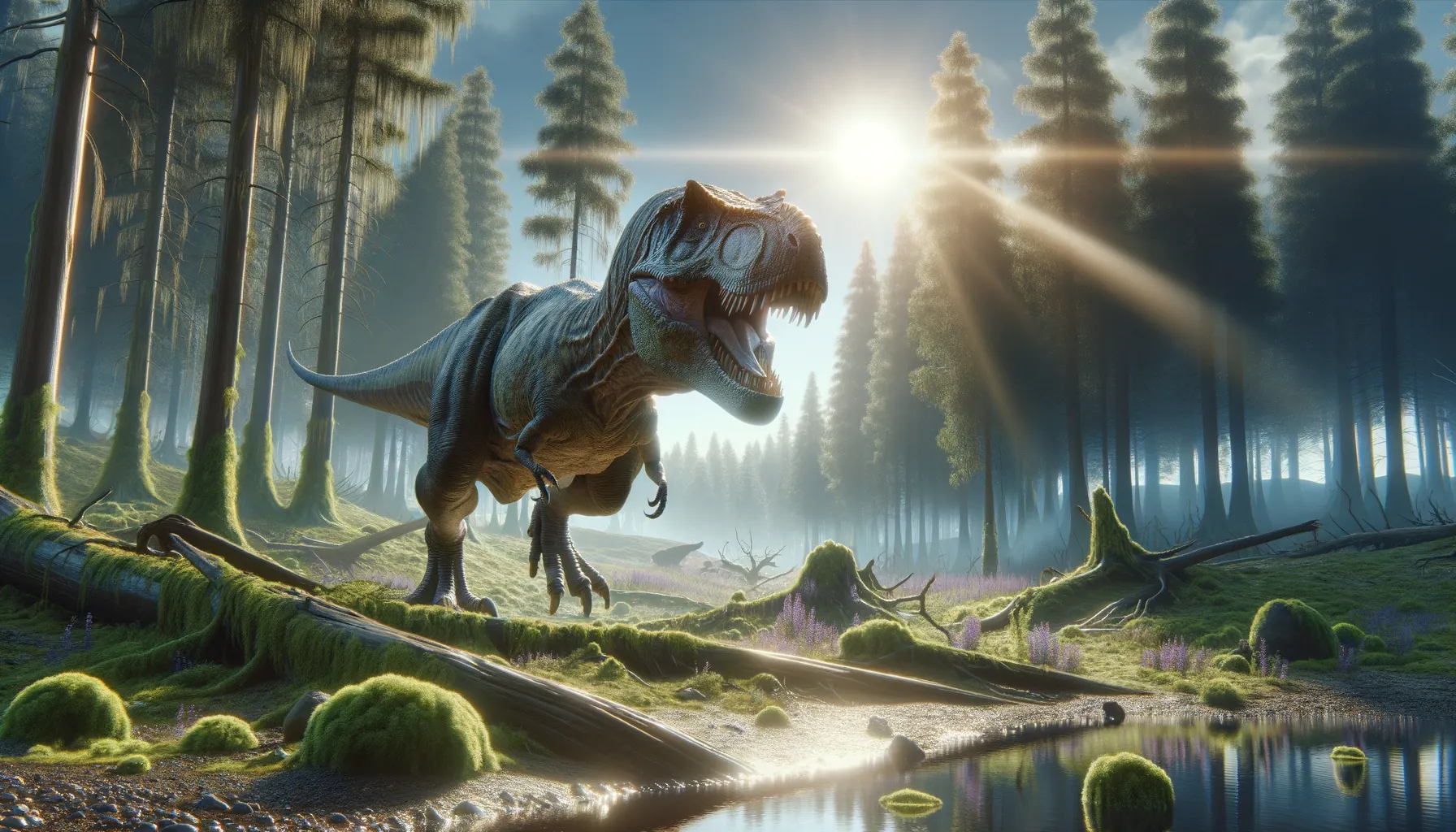
Suskityrannus
Small but mighty in the dinosaur lineage!
Period
Cretaceous
Length
Measured about 3 meters in length.
Height
Stood approximately 0.9 meters tall at the hip.
Weight
Weighed around 45 to 90 kilograms.
Suskityrannus was a small, early relative of Tyrannosaurus rex, living around 92 million years ago. This dinosaur provides significant insights into the evolutionary history of tyrannosaurids, showing a blend of features typical of both smaller and larger relatives. Despite its smaller size compared to the infamous T. rex, Suskityrannus shared several characteristics that indicate its evolutionary potential to eventually become a dominant predator.
Diet
Suskityrannus was carnivorous, feeding on smaller vertebrates and possibly scavenging. Its diet consisted of small prey, reflecting its size and predatory capabilities.
Hunting
Suskityrannus likely used stealth and speed to hunt, relying on surprise to capture its prey. With its keen senses, it was adept at detecting small animals, aiding its survival in a competitive ecosystem.
Environmental challenges
Living during the Late Cretaceous, Suskityrannus faced changes in climate, as well as competition for resources with other dinosaurs. Environmental shifts could have included fluctuations in temperature and periods of drought. These factors required it to adapt to diverse surroundings and make efficient use of the available resources.
Speed
Suskityrannus could run at moderate speeds.
Lifespan
Estimated to live around 10 to 20 years.
First discovery
Discovered in 1998 in New Mexico, USA.
Fun Facts
- Suskityrannus was a small relative of the mighty T. rex, only about 3 feet tall at the hip and 9 feet in length.
- The name 'Suskityrannus' means 'coyote tyrant,' which refers to both its size and its position as a predator.
- It lived roughly 92 million years ago during the Late Cretaceous period, a time when Earth was very different from today.
- Despite its small size, Suskityrannus was an efficient hunter and had a set of sharp teeth perfect for catching prey.
- Suskityrannus helps scientists understand the evolution of larger tyrannosaurs like T. rex, showing early versions of their traits.
- The fossils of Suskityrannus were discovered in New Mexico, providing important clues about dinosaur life in North America.
- Suskityrannus offers insights into how dinosaurs adapted to their environments and why their sizes varied so much.
Growth and Development
Suskityrannus showed rapid growth rates typical of many theropods, reaching near-adult sizes quickly. Its development involved changes in skull shape and limb proportions, adapting over time for its predatory lifestyle. Juveniles likely remained hidden to avoid predators, maturing rapidly to fend for themselves.
Habitat
This dinosaur inhabited semi-arid regions with open woodlands and river systems. Such environments provided diverse prey options and cover for hunting. Seasonal changes might have influenced migratory patterns in the search for food and water.
Interaction with other species
Suskityrannus shared its environment with various other dinosaur species, including larger predators and herbivores. It likely competed for resources, occasionally confronting larger carnivorous dinosaurs over prey. It also might have formed symbiotic or competitive relationships with smaller animals in its niche.
Natural lifespan
Its natural lifespan was likely similar to other small theropods, around 10 to 20 years.
Reproduction
Suskityrannus likely laid eggs in nests, as suggested by its theropod relatives' behaviors. Parental care might have been present to protect the young until they could survive on their own. Breeding strategies would have included selecting suitable nesting grounds to offer protection from predators.
Social behaviour
Little is known about its specific social behavior, but it might have lived in small groups or solitary. Social interactions would include communication for mating and territory establishment. Its behavior could have been influenced by food availability and population density.
Fossil locations
Fossils of Suskityrannus have been found primarily in the Zuni Basin of New Mexico. These sites have provided critical insights into the diversity of dinosaurs from this region. The fossils are well-preserved, offering detailed information on its morphology and lifestyle.
